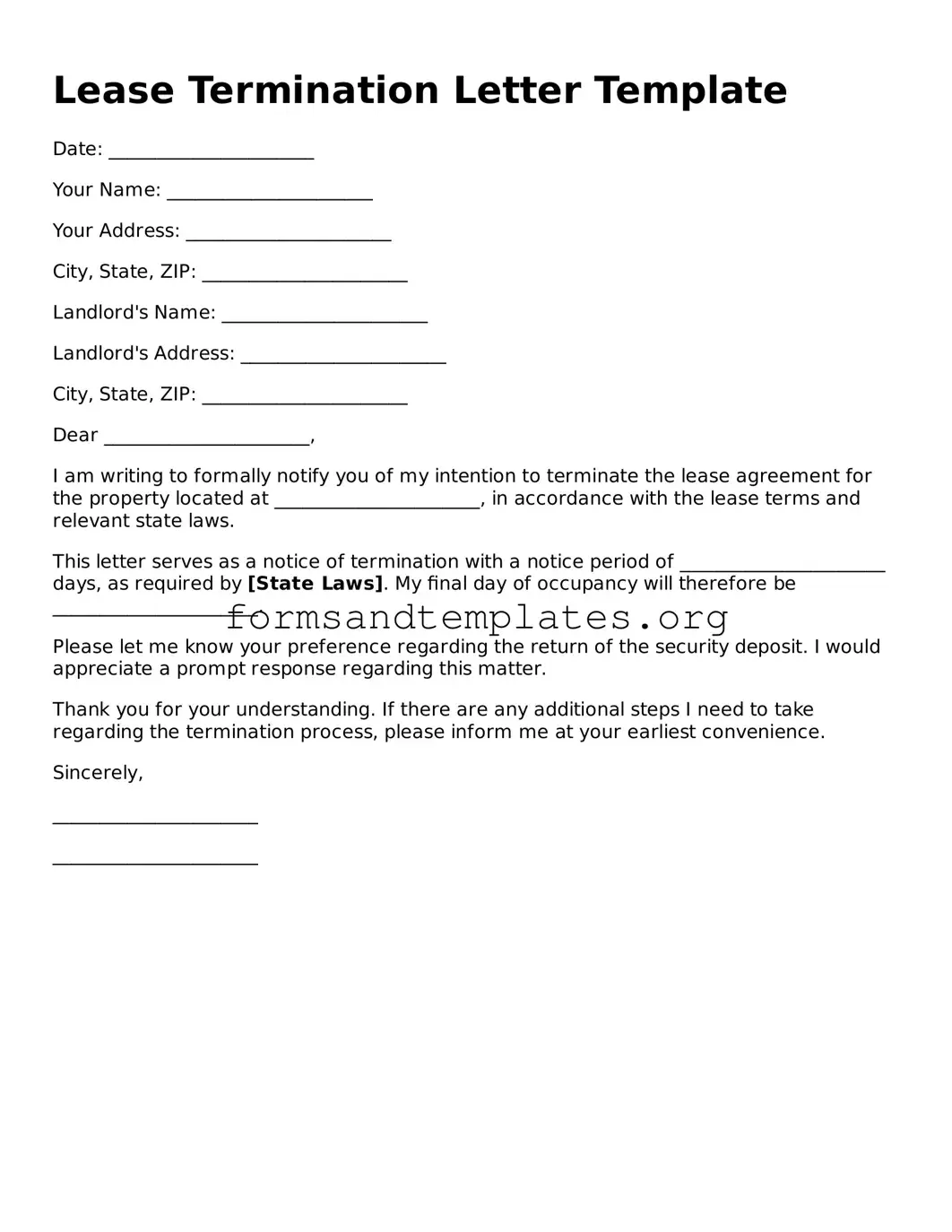Attorney-Verified Lease Termination Letter Template
A Lease Termination Letter is a formal document used by tenants or landlords to officially end a lease agreement. This letter outlines the intent to vacate a rental property and provides necessary details such as the termination date and any final arrangements. Understanding how to properly fill out this form can help ensure a smooth transition for both parties involved.
Ready to get started? Fill out the form by clicking the button below.
Access Editor Here
